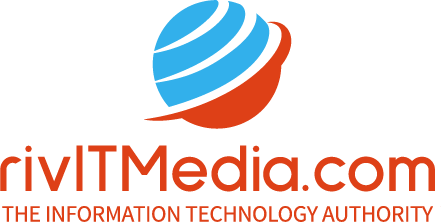HotPage malware has emerged as a significant concern. This malicious software infiltrates systems with the intention of causing disruptions, gathering sensitive information, and compromising user privacy. This article delves into the specifics of HotPage malware, its impact, and provides a comprehensive guide for its removal, alongside best practices for future prevention.
HotPage malware, also known by various detection names, is a type of potentially unwanted program (PUP) that primarily affects web browsers. It often infiltrates systems through deceptive means such as software bundling or malicious advertisements, leading to various intrusive behaviors. Users typically encounter it when their browsers are redirected to unfamiliar websites, experiencing changes to their home page or search engine settings.
Actions and Consequences of HotPage Malware
Once HotPage malware successfully infiltrates a system, it performs several disruptive actions:
- Browser Hijacking: HotPage malware redirects web traffic to its designated sites, often resulting in unwanted advertisements and altered search results. This can lead to frustration and decreased productivity as users struggle to navigate their usual web environments.
- Privacy Risks: By modifying browser settings, HotPage malware may track user activity and collect sensitive information, such as search queries and browsing history. This information can be used for further targeted attacks or sold to third parties, posing significant privacy risks.
- System Performance Issues: The presence of HotPage malware can degrade system performance. Users might notice slower browsing speeds, increased CPU usage, or frequent crashes, all of which impact the overall usability of their devices.
- Increased Vulnerability: With HotPage malware manipulating browser settings, systems become more susceptible to additional malware infections. The altered settings might make it easier for other malicious programs to gain access to the system.
Detection Names and Similar Threats
HotPage malware might be detected under various names by different security software. Common detection names include:
- HotPage
- HotPage Redirect
- HotPage Browser Hijacker
- HotPage Adware
It is important to recognize similar threats that exhibit comparable behaviors:
- Conduit Search: A browser hijacker that changes browser settings and redirects traffic.
- MyStart by IncrediBar: Alters homepage and search settings, leading to unwanted ads and potential privacy issues.
- Delta Search: A browser hijacker that modifies browser configurations and promotes undesirable search engines.
Removal Guide
Removing HotPage malware involves a series of methodical steps to ensure complete eradication:
Step 1: Uninstall Suspicious Programs
- Windows 10/11:
- Open Settings by pressing
Win + I. - Go to Apps.
- Scroll through the list and find any unfamiliar or suspicious programs. Right-click and select Uninstall.
- Open Settings by pressing
- macOS:
- Open Finder.
- Go to the Applications folder.
- Locate and drag any suspicious applications to the Trash. Empty the Trash.
Step 2: Reset Browser Settings
- Google Chrome:
- Open Chrome and click the three vertical dots in the top-right corner.
- Go to Settings.
- Scroll down and click Advanced.
- Under Reset and clean up, select Restore settings to their original defaults and confirm by clicking Reset settings.
- Mozilla Firefox:
- Open Firefox and click the three horizontal lines in the top-right corner.
- Go to Help and select Troubleshooting Information.
- Click Refresh Firefox and confirm by clicking Refresh Firefox again.
- Microsoft Edge:
- Open Edge and click the three horizontal dots in the top-right corner.
- Go to Settings.
- Click on Reset settings and choose Restore settings to their default values. Confirm by clicking Reset.
Step 3: Remove Unwanted Extensions
- Google Chrome:
- Go to More Tools > Extensions.
- Remove any extensions that seem unfamiliar or suspicious.
- Mozilla Firefox:
- Go to Add-ons and select Extensions.
- Remove any extensions that are unfamiliar or seem unnecessary.
- Microsoft Edge:
- Go to Extensions.
- Remove any suspicious extensions.
Step 4: Clear Cache and Cookies
- Google Chrome:
- Go to Settings > Privacy and Security > Clear browsing data.
- Select Cookies and other site data and Cached images and files. Click Clear data.
- Mozilla Firefox:
- Go to Preferences > Privacy & Security > Cookies and Site Data.
- Click Clear Data.
- Microsoft Edge:
- Go to Settings > Privacy, search, and services > Clear browsing data.
- Choose Cookies and other site data and Cached images and files. Click Clear now.
Step 5: Perform a Full System Scan
While specific third-party anti-malware tools are not mentioned here, it’s advisable to use a reputable system scanning and cleaning tool built into your operating system or available through trusted sources. Ensure the scan is thorough to detect and eliminate any residual malware components.
Best Practices for Prevention
- Be Cautious with Downloads: Only download software from reputable sources and avoid installing programs from unfamiliar websites.
- Verify Browser Extensions: Regularly review and manage browser extensions, ensuring that only trusted ones are installed.
- Keep Software Updated: Ensure that your operating system, browsers, and all applications are up-to-date with the latest security patches.
- Use Strong Passwords: Employ strong, unique passwords for online accounts to reduce the risk of unauthorized access.
- Enable Security Features: Utilize built-in security features of your operating system, such as firewalls and antivirus programs, to enhance protection.
- Educate Yourself: Stay informed about the latest cybersecurity threats and practices. Awareness can significantly reduce the likelihood of falling victim to new malware.
By following these removal steps and best practices, you can mitigate the risks posed by HotPage malware and safeguard your system from future infections.




